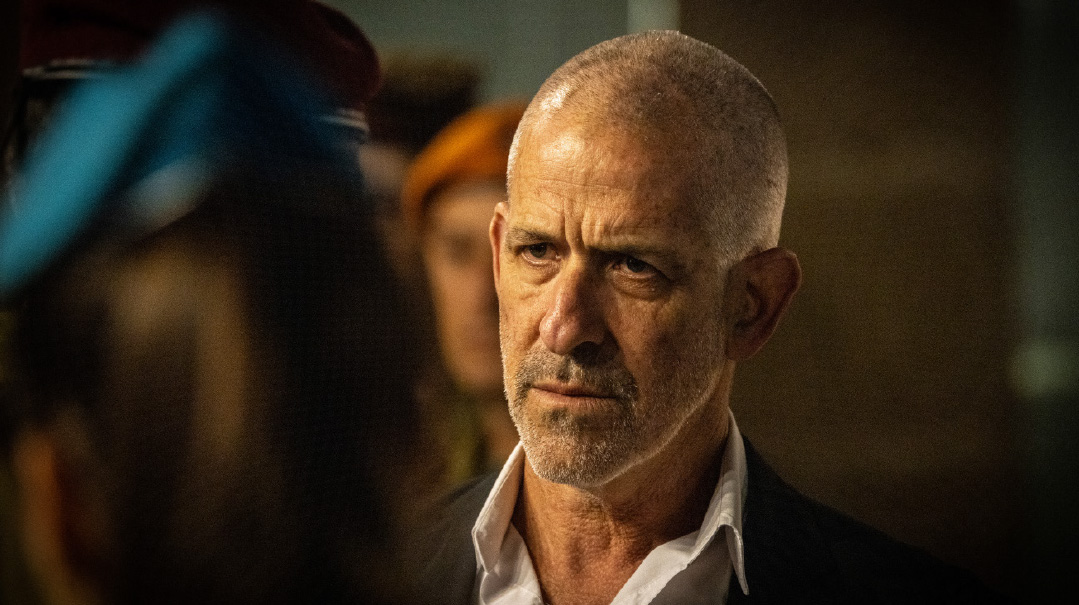What Is Sinas Chinam?

I recently heard Rav Reuven Leuchter speak during the Three Weeks on the subject of sinas chinam, the sin for which the Second Beis Hamikdash was destroyed and for which our long exile continues.
The term sinas chinam, he noted, is a strange one. Even when we experience something close to hatred, we never think of it as causeless. We may be mistaken about the subject of our dislike, but at least we can usually identify a cause.
To properly define sinas chinam, Rav Leuchter suggested, we must first identify its opposite, the most fundamental love: the love one feels for oneself — as in, “love your friend as [you love] yourself.”
Sinas chinam is the rejection of another for no reason other than that he is not me and his way of serving the Borei Olam is different from mine. So long as one cannot accept that Hashem has created each of us different and with his or her unique path to Him, one is engaged in sinas chinam, not to mention denial of the Creator Himself.
To illustrate the point, Rav Leuchter recalled a talk he once gave to a group of pashute balabatim, most of whom could not read a Hebrew verse. After ascertaining what each one did, he told them how important their livelihoods are in Hashem’s Eyes. To the builder, he said Hashem desires a world filled with well-constructed buildings; to the manufacturer of floor tiles, Hashem wants beautiful homes; to the shmatteh merchant, Hashem wants people dressed in comfortable garments.
Their eyes lit up, followed by puzzlement. No other rabbi had ever spoken to them in such a fashion. All they had ever heard from visiting speakers was: “The only worthwhile activity is learning Torah; all else is hevel havalim.”
That message, to a group of unlearned Jews, Rav Leuchter pointed out, was to deny them any means of serving the Ribbono shel Olam in a meaningful fashion.
RAV LEUCHTER WAS SPEAKING to a room full of Kesher Yehudi volunteers, all of whom work one-on-one with secular study partners. His message to them was succinct: Every Jew has a natural connection to Taryag Mitzvos. But not every Jew is suited to be chareidi. Get rid of any desire that they should become like you — i.e., chareidi.
The volunteers’ task, he said, is to help those with whom they are learning to develop a relationship with the Creator, particular to the situation in which they find themselves, both in terms of their natural kochos hanefesh and in terms of their specific background. Chinuch al pi darkam is the goal, not convincing them to be like us.
Rav Leuchter recounted an incident from his days working in kiruv in Haifa. Frequently, he confided, it would have been the easiest thing in the world to use the momentum of those with whom he was working with to pull them into the chareidi camp.
In one case, for instance, a recent baal teshuvah, whose livelihood consisted of singing at weddings, had contracted to sing at a New Year’s party, and wanted to break the contract.
But the chareidi rav with a long frock told him he had obligations in Choshen Mishpat, and he should just drink another vodka and go ahead. He offered the baal teshuvah as much time learning together as he wanted, and told him not to accept any more such engagements. But in the meantime, he had to fulfill his contractual obligations.
Rav Leuchter would not let him jump ahead of himself. Today that man is raising a frum family. He is no longer singing professionally, but neither is he learning full-time in kollel.
Because he worked with that particular baal teshuvah and many others in the context of their world, not his own, Rav Leuchter was able to help them become balanced, fully functioning religious Jews, not the sad detritus of a kiruv worker too eager to pull them into his box.
Kiruv is but one context in which it is crucial to accept that each of us has a unique path of Divine service.
Each of us has a part to play in the symphony to Hashem’s unity. Acknowledging the multiplicity of parts in that song of Divine unity is the key to rediscovering the unity Klal Yisrael experienced at Sinai, and the precondition to the end of our Exile.
Some Mutual Admiration
A few months back, I described a discussion in Baltimore between Rabbi Moshe Taragin of Yeshivat Har Etzion and myself on the different religious communities in Israel. We each began by describing what we view as the particular strengths of the other’s community.
In that column, I reported Rabbi Taragin’s praises of the chareidi community. But I saved my response, concerning the virtues of his chardal (chareidi dati-leumi) community, for a later date. In light of Rav Leuchter’s message above, the time to share my response has come.
I began by expressing my admiration for the emphasis the chardal community places in its chinuch on inyanei emunah and internalizing a deep faith. That is particularly manifest in the way the community responds to tragedy: the kidnapping and murder of the three yeshivah bochurim in the summer of 2014, battlefield deaths, and drive-by killings on the roads of Judea and Samaria.
Just before Pesach, Rabbi Achiad Ettinger, the founder of a hesder yeshivah in a poor South Tel Aviv neighborhood and father of 12, was shot by an Arab terrorist near the West Bank settlement of Ariel. After Pesach, his wife was interviewed by Israel Radio and asked about the very difficult Pesach the family had just passed.
Without bravado and without denying the pain of her loss, she responded, “It was a Pesach nifla’ah [wonderful]. Why must we always focus on what we lack rather than on what we have?”
One of my sons, a chareidi yungerman studying for dayanus, commented after listening to that interview: “When I hear Jews like that, I feel optimistic about the future of the country.”
The second point I mentioned was the combination of commitment to Torah and to Klal Yisrael, with the latter often manifested in joining elite combat units. The Baltimore panel took place shortly after the return of the body of Zechariah Baumol Hy”d 37 years after the Battle of Sultan Yacoub, in which he was killed or captured, along with two other hesder yeshivah bochurim, Yehudah Katz and Zev Feldman Hy”d.
The religious press was filled with stories of their commitment to Torah learning. Katz wore his tefillin in his tank into battle. His chavrusa at the time of his death, Rabbi Meir Goldwicht, is still waiting to complete the few remaining dapim of the masechta they were then learning. When Katz was called up to battle, his chavrusa promised to wait until he returned to make a siyum.
The chareidi world is rightly concerned about the impact of IDF service on both a bochur’s religious observance and growth in Torah learning. But that should not keep us from expressing admiration for those who grab every possible moment to learn in the midst of IDF training or even battle.
A remark of Dr. Leo Deutschlander, when he was asked about the fact that both he and Dr. Judith Rosenbaum Grunfeld, two of the central figures of the early Bais Yaakov movement, held PhDs, is apt. He said, “If a person tells you he intends to swim the English Channel, you think, ‘What a fool.’ If he tells you he swam the English Channel, you are impressed.”
I also mentioned the level of tzniyus found in the chardal community, where full hair covering in the form of a tichel is the norm, and nary a $5,000 natural-looking, long sheitel is to be found. And finally, I pointed to the self-respect of members of the community. The Rambam’s dictum that one should strive never to be dependent on others is fully observed in the community, and there is no culture of begging as a means of parnassah.
These praises did not cause me for a moment to question the derech I have chosen for myself, even if they did suggest ways in which I might strengthen my own avodah.
Originally featured in Mishpacha, Issue 772. Yonoson Rosenblum may be contacted directly at rosenblum@mishpacha.com
Oops! We could not locate your form.







